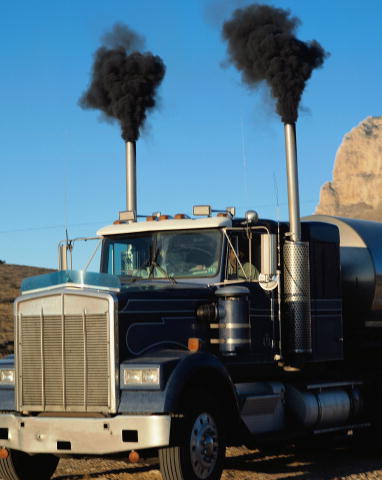We’ve been told lots about greenhouse gases (GHGs) and what effect these have on atmospheric warming and climate. They are therefore grouped or classified thusly as: climate pollutants.
But, the climate-pollutant class is not limited to greenhouse gases alone. Black carbon (also known as elemental carbon) is an element under that umbrella as well. Carbon dioxide, the most prevalent of the greenhouse gases, compared to BC, pales in comparison when it comes to each element’s potential to warm the atmosphere. BC’s potential is, at the very least, 460 times that of CO2’s. Which is why reducing atmospheric BC is prescriptive in our better managing short-term climate change and global warming impacts, which, has the potential to lead to global-warming-related temperature reductions long-term.
As brought to bear in the “Executive Summary” section of The World Bank Environment Department’s Dec. 2011 “Black Carbon and Climate Change: Considerations for International Development Agencies”* report, is “Climate science now views BC as the second or third largest warming agent after carbon dioxide (CO2), alongside methane.”
So, I’ve known for some time about black carbon in the sense that as a pollutant floating in air it can pose harm to health after being breathed in and once getting past the body’s defenses. But, when I learned that BC could also contribute to a warming planet, without having prior knowledge about such being a possibility, this immediately piqued my curiosity as to how exactly that could be. So, what is it about BC that makes it efficient as an atmospheric “warming agent”?
So, beginning at the beginning, black carbon is created as a result of incomplete combustion when it comes to the burning of fossil and other fuels. As such, that which occupies air, doesn’t just block sunlight, it traps it and then because of its chemical makeup, converts that light to heat.
According to the Climate & Clean Air Coalition, in 2015 roughly 6.6 million tonnes were emitted into the atmosphere and more than half the annual amount comes from cooking and indoor heating activities. Lesser amounts come from incomplete combustion of diesel and other fuel sources like biofuels, for example.
BC, moreover, is considered to be a short-lived climate pollutant (SLCP) because it only remains in the atmosphere briefly – for a couple of weeks at most – but it can have a significant effect on climate which, incidentally, is much, much stronger than carbon dioxide’s which is why more attention should be paid to black carbon in terms of not only its climate-impact potential, but also on its mitigation and on finding ways to reduce the opportunity for BC to be created in the first place.
Okay, so in understanding BC’s implications on climate and warming, as well as knowing its place in the hierarchy of substances in their ability to move the global warming needle to a significant degree, why does it seem that BC doesn’t get nearly the attention regarding the role it plays in contributing to climate change as do carbon dioxide and methane, especially since minimizing BC’s climate impact seems a rather straightforward proposition? Nothing all that complicated about it, really.
The difficulty lies, apparently, in implementing strategies that effectively mitigate airborne BC and/or prevent its creation to begin with.
With publication of The World Bank Environment Department’s report and others like it, these can make a tremendous difference, that is, as long as they’re read, its presented findings aren’t pooh-poohed (read: “denounced”) and listed recommendations are actually carried out instead of the opposite happening, meaning aids like these ending up on shelves and becoming collectors of dust.
The good news as brought out in the “Black Carbon and Climate Change” report in the “Preface” section: “The scientific understanding of the role of black carbon in climate change has lagged behind that for carbon dioxide and other greenhouse gases. The gap appears to be closing as research is expanding rapidly.”
For more about black carbon, see: “Drilling down on fossil-fuel burning and its connection to carbon/carbon dioxide in air.”
* Levitsky, Michael. 2011. Black Carbon and Climate Change : Considerations for International Development Agencies. Environment department papers;no. 112. Climate change series. World Bank, Washington, DC. © World Bank. https://openknowledge.worldbank.org/handle/10986/18317 License BY CC 3.0 IGO
Last updated on Mar. 6, 2023 at 1:42 p.m. Pacific Standard Time.
⁃ Alan Kandel
Copyrighted material.
Corresponding, connected home-page-entry image: CalEPA Air Resources Board
